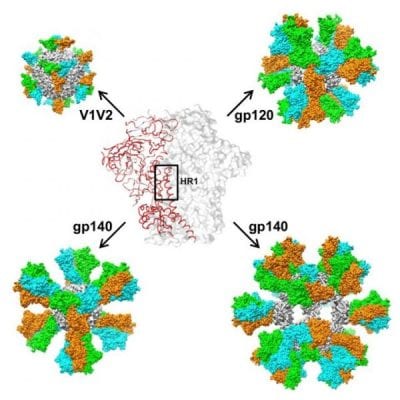HIV has posed to be one of the hardest viruses to tackle, thus making it more dangerous and harder to eradicate. This is in part because of what’s called metastability. This is when the virus actually changes shape at certain points, like when it is trying to enter a cell. When developing vaccines for a virus (or anything else for that matter), it is essential to know the structure of said foreign particle in order to produce a vaccine that fights it. This poses a problem when we have a changing structure, making it harder to identify when trying to create antibodies.
Two studies led by scientists at The Scripps Research Institute (TSRI) are trying to tackle this by first tightening up their knowledge about the structure of the HIV Envelope Glycoprotein (Env) which is like a loaded spring allowing changes when trying to enter a cell. They posited that the HR1 region of the Env could be the link, because of its resemblance to a bent twig looking to spring straight. If they could figure out how to adapt that bend region they can prevent the entire structure from changing form. They did this by genetically modifying the HIV genetic sequence, and thus shortening that HR1 region, and it kept the structure stable without any transformation. There are also other viruses that contain Env proteins with HR1-like regions, so this study could prove essential in battling those as well.

Next they need to design nanoparticles that look like the HIV. These Virus-like particles (VLPs) are just hollow shells of other naturally found proteins. The scientists can add any sort of viral protein to the outside of these shells and thus create a sort of fake virus, which can trick the body into producing antibodies against the real virus, should it eventually encounter it. Once again, the Env protein is the limiting factor. The Env trimer is three subunits with a crown on top where they meet. They had to create the fake virus by attaching one of the trimers to the nanoparticle, and then these nanoparticles could self-assemble with other trimeric nanoparticles to form a cluster. Six combinations of this design have worked well in lab testing and now await animal trials. If this study is successful, it could mean a broad spectrum vaccine that could help eradicate HIV once and for all.
[button link=”http://www.nature.com/ncomms/2016/160628/ncomms12041/full/ncomms12041.html” icon=”fa-external-link” side=”left” target=”blank” color=”285b5e” textcolor=”ffffff”]Source: Nature Communications [/button]









